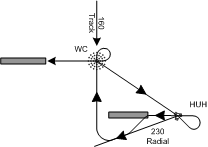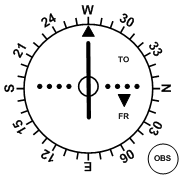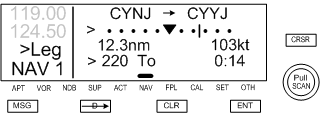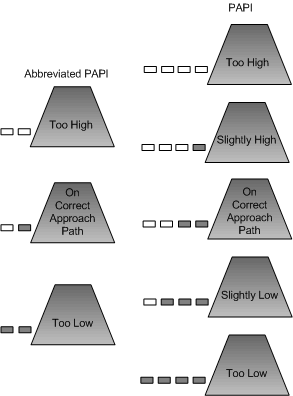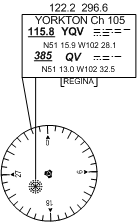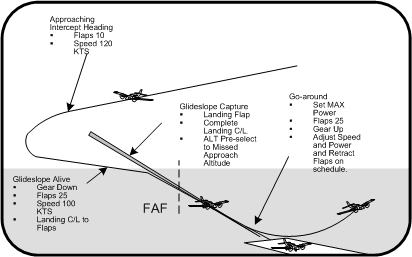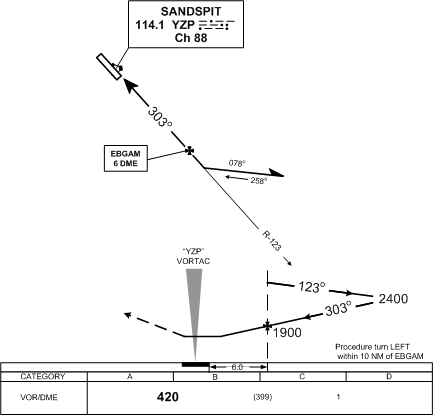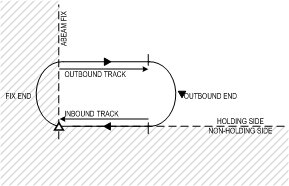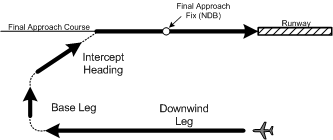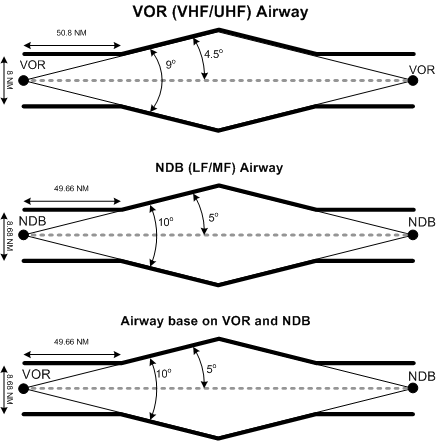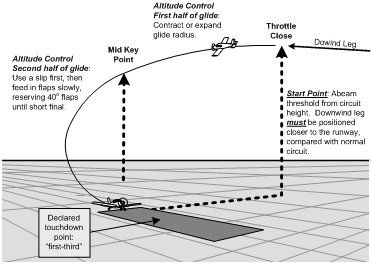Commercial Pilot Program
- Commercial Pilot Program
- Prerequisites
- Transport Canada's Minimum Requirements for Completion
- Air Training Syllabus
- Air Exercise
- Description
- Single-pilot Standard Operating Procedures
- Right Seat Training
- Standard Instrument Departure Procedures (SIDs)
- Introduction to Partial Panel Instrument Flying—Heading, Altitudes, and Speed Variations
- Partial Panel—Timed Turns Procedures
- Partial Panel—Recognition and Recovery of Unusual Attitudes
- Advanced Manoeuvres Training
- Radio Navigation: ADF Position Identification, Intercepts and Tracking
- Radio Navigation: VOR Position Identification, Intercepts and Tracking
- Radio Navigation: GNNS15 Waypoint Identification, Intercepts and Tracking
- Introduction to IFR Flight
- Night Flying and Circuits
- Night Cross-country Navigation
- Multi-crew Standard Operating Procedures
- Mountain Flying
- Advanced Instrument Flying: Simulated VOR and NDB Non-precision Approaches18
- Advanced Instrument Flying: VOR and NDB Holds
- Advanced Instrument Flying: Vectored Approaches
- Advanced Instrument Flying: IFR Flight from Langley Airport to Victoria Airport
- Flight Test Preparation
- Flight Training Required Texts
- Langley Flying School’s Commercial Groundschool
- References
Successful completion of the Commercial Pilot Program leads to eligibility for Commercial Pilot License (Aeroplane Category) issued by Transport Canada and the issuance of a Certificate of Qualification—Commercial Pilot by Langley Flying School, Inc. The holder of a Commercial Pilot License may exercise the privileges of Pilot-in-Command of any aircraft engaged in a commercial air service where the aircraft minimum flight-crew document requires a minimum flight crew of one pilot—e.g., air taxi—or the privileges of Second-in-Command1 of any aircraft type that is endorsed on the license.2
Commercial Pilot Training is composed of groundschool and flight training segments. The groundschool is designed to prepare students for the knowledge requirements for the Commercial Pilot Licence, as demonstrated on the Transport Canada written examination. In contrast, the flight training segment is designed to prepare students for the skill requirements for the licence, as demonstrated on the Transport Canada Commercial Pilot flight test. In accordance with the International Civial Aviation Organization, all pilots must demonstrate English language proficiency.
Prerequisites
The minimum age for a Commercial Pilot License is eighteen (18) years of age. Before commencing training in the Commercial Pilot Program, a student requires a valid Private Pilot Licence—Aeroplane Category, and a valid Category 1 Medical Certificate. 3
Transport Canada's Minimum Requirements for Completion
Knowledge Requirements—Ground School Instruction
An applicant shall have completed a minimum of 80 hours commercial pilot aeroplane ground school instruction including at least the following subjects:
- Canadian Aviation Regulations,
- Aerodynamics and Theory of Flight,
- Meteorology,
- Airframes, Engines and Systems,
- Flight Instruments,
- Radio and Electronic Theory,
- Navigation,
- Flight Operations,
- Licensing Requirements, and
- Human Factors, including pilot decision-making.
Knowledge Requirements—Written Examination
All applicants shall have obtained a minimum of 60% in each of the following four mandatory subjects areas as well as in the overall written examination Commercial Pilot Licence—Aeroplane (CPAER):
- Air Law—regulations, rules and orders, air traffic services, practices and procedures, and licensing requirements relevant to the licence,
- Navigation—navigation, radio aids and electronic theory,
- Meteorology, and
- Aeronautics—General Knowledge—airframes, engines and systems, theory of flight, flight instruments and flight operations.
Experience Requirements
An applicant shall have completed a minimum of 200 hours flight time in aeroplanes, of which a minimum of 100 hours shall be pilot-in-command time including 20 hours cross-country pilot-in-command flight time, and following the issuance of their Private Pilot Licence by Canada or another contracting state, have completed 65 hours of commercial pilot flight training in aeroplanes consisting of a minimum of:
- 35 hours dual instruction flight time, under the direction and supervision of the holder of a Flight Instructor Rating — Aeroplane, including:
- 5 hours night, including a minimum of 2 hours of cross-country flight time;
- 5 hours cross-country; and
- 20 hours of instrument flight time—a maximum 10 hours of the 20 hours may be conducted on an approved aeroplane simulator or synthetic flight training device.
- 30 hours solo flight time including:
- 25 hours solo flight time emphasizing the improvement of general flying skills of the applicant which shall include a cross-country flight to a point of a minimum of 300 nautical mile radius from the point of departure and shall include a minimum of 3 landings at points other than that of departure; and
- 5 hours solo flight time by night during which a minimum of 10 takeoffs, circuits and landings were completed.
Skill Requirements
Within the 12 months preceding the date of application for the licence, an applicant shall successfully complete a flight test as pilot-in-command of an aeroplane, in accordance with the Commercial Pilot Flight Test Guide.
Age and Medical Requirements
- Category 1 Medical Certificate.
- Minimum Age of 18 years.
All students must be cautioned that the cost of training is contingent on meeting the flight test standards of Transport Canada, and because the skill and knowledge of students varies, so do the training costs. While variations in student performance are more prevelent at the Private Pilot level when compared, Commercial Pilot students must also financially plan for this and are encouraged to retain an additonal $5,000 in reserve for financial planning purposes so as provide for varied rates of learning and varied levels of skill.
Also, note that students may be required to fly additional hours (time-building) as Pilot-in-command (PIC) in order to meet the minimum time required to qualify for the Commercial Pilot Licence—this would typically apply, for example, to student who have not flown other than the solo requirements for the Private Pilot and the Commercial Pilot. Please see the above link for additional information.
Prepayment of fees is not required. Students pay tuition and aircraft unitlizations at the conclusion of training flights, and pay groundschool tuition at the beginning of the session. All flight schools in British Columbia are required by law to charge the GST (5%). Visa, MasterCard, American Express, and Debit Cards are accepted.
Where applicable, the above costs are based on Transport Canada’s minimum requirement. While completion of the program by students is usually accomplished in accordance with Transport Canada’s minimum requirement, success of students is dependent on skill, knowledge, and preparedness.
Aircraft rates may be subject to change with minimal notice, depending on such things, for example, as fluctuating aviation fuel prices.
Air Training Syllabus
In accordance with the training standards of Transport Canada and Langley Flying School, the following is an outline of air training that makes up the Commercial Pilot Program:
Air Exercise |
Description |
|---|---|
Single-pilot Standard Operating Procedures |
Standard Operating Procedures (SOPs) are cockpit co-ordination procedures required by Canadian Aviation Regulations in multi-crew commercial flight operations—whether Air Taxi, Commuter, or Airline. SOPs consist primarily of memorised pilot procedures and verbal calls that are used repetitively at various phases of flight; and serve to maximise joint situational-awareness and co-ordination by the flight crew. There are two levels of SOPs training at Langley Flying School. The first is Single-pilot SOPs, which are based on single-pilot commercial operations—i.e., they are “PIC-focused.” While there is no effective involvement by a second pilot in Single-pilot SOPs training—other than for the purposes of monitoring and evaluation—students begin at this level to “verbalise” their actions and procedures in the cockpit in accordance with a written, prescribed standard (the SOPs themselves).6 Single-pilot SOPs are published in the Langley Flying School Flight Training Handbook, and, unless otherwise specified by your Instructor, all commercial training flights are conducted using Single-pilot SOPs. In contrast, Multi-crew SOPs—see below for details—takes the SOPs training to a higher level. Using the multi-crew (two-station) X-plane Flight Simulator, students learn and practise full multi-crew operations, and are therefore more fully prepared for their first pilot job—likely the “right seat” of a multi-crew aircraft. SOPs training in both single-pilot and multi-crew operations includes standardised procedures that extend to all phases of a normal flight-cycle, including checklist procedures, take-off briefing, radio navigation procedures, and conformity with a prescribed departure and approach flight profile. |
Right Seat Training |
Since it is likely that the first job in a multi-crew aircraft is likely to be in the right seat Second-in-Command position, Langley Flying School’s training ensures that you are both qualified and comfortable with operating an aircraft from the right seat. Right-seat training is incorporated throughout the Commercial Pilot training program, with students typically assigned the right seat every second training flight.7 |
Standard Instrument Departure Procedures (SIDs) |
This exercise is conducted at the beginning of almost all Commercial Pilot training flights, and requires that students fly specified written instrument departure procedures—based on published altitudes and tracks—immediately following takeoff in simulated IFR conditions. The SIDs used by Commercial Students are published in Langley Flying School’s Flight Training Handbook, and are designed with varying levels of complexity. The advanced SIDs require that students establish IFR holds at specified radio navigation facilities located in the vicinity of Langley Airport.8 |
Introduction to Partial Panel Instrument Flying—Heading, Altitudes, and Speed Variations |
This exercise introduces students to “limited” or “partial” instrument panel flying where, by simulation, the vacuum system failure has occurred and flight-instrument information is limited to that derived from the pitot-static instruments and the turn co-ordinator.9 This exercise is first flown in the Flight Simulator, and then in the aircraft. |
Partial Panel—Timed Turns Procedures |
When a vacuum failure occurs, the heading indicator can no longer be used for turn information; turn information—simply the heading of the aircraft—must therefore be derived from the compass. The compass, however, is subject to turning errors, making it useless as a means of determining heading while the aircraft is in a banked attitude. Accordingly, changes in aircraft heading, within the context of a failed vacuum system (partial panel), must be accomplished by timing (in seconds) the short intervals at which the aircraft is held in a standard-rate turn.10 In this exercise students learn organised techniques and procedures for safely and accurately producing specified limited-panel heading changes based on timed turns. This exercise is first flown in the Flight Simulator, and then flown in the aircraft. |
Partial Panel—Recognition and Recovery of Unusual Attitudes |
As the continuation of partial panel instrument training, this exercise focuses on the procedures and techniques for recovering from unusual attitudes using only partial panel flight-instrument information. Training here focuses on partial panel recognition and recovery from impending stalls and spiral dives, as well as fully developed stalls and spins.11 This exercise is first flown in the Flight Simulator, and then flown in the aircraft, with the pervading goal being to quickly detect or recognize the unusual attitude, and immediately implement pilot inputs necessary to produce a smooth and effective recovery with minimal loss of altitude. |
Advanced Manoeuvres Training |
Various advanced flight manoeuvres are incorporated during this program, including lazy-eights, steep turn “switch-backs,” and descending 60-degree bank turns—the emphasis during this training is the development of student proficiency in angle of attack and speed control during aggressive manoeuvres. Typically, these manoeuvres are integrated periodically into most training flights. |
Radio Navigation: ADF Position Identification, Intercepts and Tracking |
In this exercise students learn procedures and techniques required for utilising NDB navigation aids, firstly as an aid to VFR navigation, and then as the primary means of navigation in simulated IFR conditions.12 Attention will focus on techniques for correct identification of the NDB, determining the position of the aircraft in relation to the NDB, and applying a systematic procedure to intercept and track specified NDB tracks.13 This exercise is first flown in the Flight Simulator, and then in the aircraft. |
Radio Navigation: VOR Position Identification, Intercepts and Tracking |
Students will learn procedures and techniques required for utilising VOR navigation aids during instrument flight conditions. VOR remains the primary system of air navigation throughout the world. Attention will focus on techniques for correct identification of VOR, determining the position of the aircraft in relation to the VOR, and applying a systematic procedure to intercept and track specified VOR radials.14 This exercise is first flown in the Flight Simulator, and then in the aircraft. |
Radio Navigation: GNNS15 Waypoint Identification, Intercepts and Tracking |
Students learn in this exercise the more specialised operation of commercial-standard satellite navigation, including the properties of signal transmission, systems testing, the electronic organisation of navigation data, waypoint and flight plan entry, and the use and operation of Leg and OBS modes for position identification, interception, and tracking. This exercise is first flown in the Flight Simulator, and then in the aircraft. |
Introduction to IFR Flight |
This exercise, which consists of a single training flight, is conducted prior to beginning night training, and is designed to introduce students to the world of IFR flight. Students receive an overview of IFR flight preparation and planning, including the preparation and execution of the specialised IFR Flight Plan, and are exposed to the system of ATC clearance and pilot read-back that governs all IFR operations in controlled airspace. Students are introduced to IFR holding procedures, and learn the fundamentals of conducting Vectored ILS and NDB approaches. This exercise will be conducted in actual cloud when possible. |
Night Flying and Circuits |
This phase of training introduces students to night VFR operations, and examines such issues as weather factors for night flying, night transitions to and from airports, and other special considerations related to the limited visual reference associated with night flying. Two areas related to pilot skill are emphasised during this phase of night training, the first focusing on upper-air night manoeuvres, and the second revolving around night circuit operations. The upper-air portion seeks to develop general proficiency related to flight manoeuvres at night—including steep turns, slow flight, and “switch back” descending 45-degree banked turns—and also includes unusual attitude recognition and recovery during both night-VFR and simulated instrument conditions. Students also learn the special considerations associated with executing a forced approach at night—including both off-airport and circuit forced-approach emergencies. Circuit training includes emphasis on the integrated use of flight instruments to establish safe transitions during the departure and approach phases of night flying, and student are trained to conduct landings without a landing light, and without cockpit landings. |
Night Cross-country Navigation |
This exercise has two components. Students first learn how to conduct low-level night navigation using diversion-navigation methods—i.e., unprepared or impromptu navigation without pre-flight preparation. The emphasis here is to develop student dead-reckoning skills using the limited landmarks typically encountered during night flying. During the second component of training, students learn to apply radio navigation skills as a supplemental aid to night VFR flying. Training here revolves around a simulated commercial night flight from Langley to Victoria and Nanaimo, during which students learn to use and apply IFR navigation charts, and additionally learn to make effective utilisation of ATC radar surveillance services. During the exercise, students receive instruction in determining their position with sole reference to radio navigation aids. Emphasis is placed on examining the requirements for conducting safe night transitions (climbs and descents) during the departure and arrival phases of flight at potentially unfamiliar airports, and students are exposed to the emergency procedure of obtaining radar vectoring when all visual references are lost (inadvertent flight into cloud). The exercise is first flown in the Flight Simulator, and then in the aircraft.16 |
Multi-crew Standard Operating Procedures |
This optional course17 consists of eight (8) hours of Groundschool training, followed by eight (8) hours multi-crew Simulator Instruction. Groundschool examines the basic yet overlapping roles that exist in multi-crew flight operations, including the command relationship and flying roles of crewmembers. The Groundschool focuses on the Standard Operating Procedures of a hypothetical company named Exeter Air Services, which provides scheduled passenger service in a PA-34 Piper Seneca between Lethbridge, Calgary and Edmonton. The Standard Operating Procedures document for this company consists of normal and non-normal (emergency) procedures, and the Groundschool will examine the company’s requirements for pre-flight, departure, en route, and arrival phases of flight. With respect to non-normal procedures, the Groundschool examines the company requirements for a rejected takeoff (engine fire/failure or severe damage), engine failure in flight, engine fire in flight, emergency descent, and passenger evacuation. From the classroom, students are then paired to form Exeter Air Services flight crews, and move to the X-plane (PA-34) Simulator. Using the knowledge acquired in the Groundschool, each flight crew will conduct four flights between Lethbridge, Calgary, and Edmonton. During these simulator sessions, each student will act (through rotation) as Captain and First Officer, and will perform as Pilot-flying and Pilot-not-flying. Developing skills and proficiency in crew-coordination, student will learn to apply a company’s Standard Operating Procedures to simulated, real-time normal and non-normal situations as the company’s routes are flown. Successful completion of this course leads to Langley Flying School’s Certificate of Qualifications—Multi-crew Standard Operating Procedures. |
Mountain Flying |
This exercise, consisting of a flight into the Coastal Mountains north of Langley Airport, introduces students to high level and low-level (valley) mountain flying; consideration is given to high-level ridge-clearing procedures and map reading, as well as low-level valley navigation, including valley-turn procedures. Emphasis is placed on recognising the hazards of inadvertent flight into “box canyons,” and the additional hazards associated with performance-limited climbs during valley transitions. |
Advanced Instrument Flying: Simulated VOR and NDB Non-precision Approaches18 |
Students will be required in this exercise to fly published simulated approaches based on vicinity radio aids. While adhering to the requirements of a written approach procedures (altitudes and tracks), students develop the necessary skills to produce an approach profile that conforms to specified distance, speed, and time requirements. This exercise is first flown in the Flight Simulator, and then in the aircraft. |
Advanced Instrument Flying: VOR and NDB Holds |
Instruction for this exercise is designed to develop fundamental skills required for the advanced Instrument Rating. Specific attention will focus on the three entry procedures that are used to establish and maintain the aircraft on a prescribed holding pattern in accordance with a simulated ATC clearance. Training will include both VOR and NDB holds. This exercise is first flown in the Flight Simulator and then in the aircraft. |
Advanced Instrument Flying: Vectored Approaches |
Students in this exercise will learn to fly vectored ILS and NDB approaches using instrument procedures published by NavCanada. Students will learn the ATC clearance format used for a vector approach, and will also learn how to conduct an approach plate briefing. All training flights for this exercise will be conducted pursuant to an actual IFR flight plan, and effort will be made to expose student to as much actual instrument conditions as possible. The exercise is first flown in the Flight Simulator, and then in the aircraft. Upon completion of this exercise, students will have been exposed to approximately 80% of the exercises that are evaluated during the IFR Rating flight test. |
Advanced Instrument Flying: IFR Flight from Langley Airport to Victoria Airport |
Flying in accordance with an actual IFR Flight Plan, students will be introduced to complete operational cycle associated with an IFR flight, including flight planning, IFR weather consideration, IFR transition and approach procedures, including ATC IFR clearance procedures. This exercise is first flown in the Flight Simulator, and then in the aircraft. |
Flight Test Preparation |
Flying skills are fine-tuned through both dual and solo flying practice as students prepare for their qualifying Flight Test, which includes the accuracy approach shown on the right. |
Flight Training Required Texts
| David L. Parry (2014) | Langley Flying School Flight Training Handbook Langley: Langley Flying School, Inc. |
| Transport Canada | Flight Training Manual (Aeroplane) (Revised 5th Edition) Vancouver: Gage Educational Publishing Company. |
| Piper Aircraft Corporation | Cherokee Cruiser Information Manual. |
Langley Flying School’s Commercial Groundschool
While Canadian Aviation Regulations require a minimum 40 hours of Groundschool instruction, Langley Flying School students receive approximately 100 hours of instruction. The Commerical Pilot Groundschool runs year round, with both full-time and part-time sessions. For information related to full-time studies, see the Professional Pilot Program link. Part-time studies (evening groundschool) provide three sessions per year, beginning in September (Fall Session), February (Spring Session), and June (Summer Session). The Spring Session begins in February and ends in late May, the Summer Session begins in June and ends in late August, and the Fall Session begins in September and ends in the middle of December. The Groundschool class meets two evenings per week (traditionally Monday and Wednesday evenings from 7pm to 9:15 PM) and a tutorial meeting is held on the weekend (students may join either the Saturday or Sunday Tutorial).19 For information pertaining to current groundschool schedules, see the Groundschool Schedules link.
Groundschool General Information
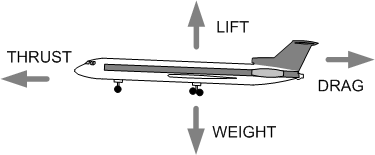
This Groundschool course 20 establishes the first step taken for many in establishing themselves in careers as professional pilots. The Commercial Pilot exercises far-reaching privileges and is at the very centre of a very large and complex infrastructure designed to organise and make safe the daily movement of aircraft around the globe; with this great privilege, however, comes great responsibilities—every decision and every action made by the pilot entails the ultimate trust of life and security from paying passengers. This course seeks to prepare its students to successfully write the Transport Canada written examination for the Commercial Pilot License.
Groundschool Evaluation
Determination of Final Grade:
|
Review Quizzes (Eight) |
40% |
|
Final Examination |
50% |
|
Class Attendance and Participation |
5% |
|
Tutorial Attendance and Participation |
5% |
To be recommended to write the Transport Canada Private Commercial Pilot examination, students must attain a minimum course grade of 75%. Additionally, before students can write the Final Examination, they must complete eight (8) Review Quizzes, to be written in class; the questions used in the Review Quizzes will be extracted from the study questions that appear at the end of each chapter. Passing mark on the Review Quizzes is 75%. The Review Quizzes may be written any time during the term for those students undertaking accelerated home study. Students are encouraged to submit completed study questions for review and correction by the instructor. Since it is impossible to cover in class all of the material associated with the Transport Canada examination, how well a student does depends directly on his or her efforts in reading, studying at home, and asking questions in class. To get the full benefit of class discussions, students should complete the assigned readings prior to class.
Groundschool Required Equipment
- E6‑B Flight Computer (or equivalent)
- ICAO Chart Rule or Navigation Plotter
- Douglas Protractor
- Vancouver VFR Navigation Chart.
- Vancouver VTA Navigation Chart
- Enroute Low Altitude Chart LO2.
Required Texts
|
David Parry, 2020 |
Langley Flying School Commercial Pilot Groundschool Manual Langley: Langley Flying School, Inc. |
| David Parry, 2020 |
Langley Flying School Flight Training Handbook Langley: Langley Flying School, Inc. |
|
Sandy A. F. MacDonald, 2000 |
From the Ground Up (twenty-ninth Revised Edition) Ottawa: Aviation Publishers Co. Limited |
| Piper Aircraft Corporation |
Piper Cherokee Pilot Information Manual |
Recommended Texts
|
Kent Johnson and John Mullock,1996 |
Aviation Weather Hazards of British Columbia and the Yukon Kelowna: Source Graphics and Print Co. Ltd. |
|
|
William K. Kershner, 1994 |
The Advanced Pilot’s Flight Manual (6th Edition) Ames: Iowa State University Press |
|
|
Peter F. Lester, 1995 |
Aviation Weather Englewood: Jeppesen Sanderson, Inc. |
|
|
Richard L. Collins, 1977 |
Flying Safely New York: Delacorte Press/Eleanor Friede |
|
|
Gregory N. Brown and Mark J. Hold,1995 |
The Turbine Pilot’s Flight Manual Ames: Iowa State University Press |
|
| Macarthur Job, 1996 |
Air Disaster (Volumes 1 and 2) Fyshwick: Aerospace Publications Pty Ltd. |
|
| Michael J. Culhane (current issue) |
Commercial Pilot Written Test Book Richmond: Accelerated Aviation Training |
|
| Transport Canada | ||
Groundschool Outline
Section I LICENSING REQUIREMENTS Note: 21
Section II AIRFRAMES, ENGINES AND SYSTEMS—PART I Note:22
Section III AIRFRAMES, ENGINES AND SYSTEMS—PART II Note:23
Review Quiz #1: Licensing Requirements and Airframes, Engines and Systems.
Section IV AERODYNAMICS AND THEORY OF FLIGHT Note:24
Section V CANADIAN AVIATION REGULATIONS PART I and PART II Note:25
Review Quiz #2: Aerodynamics, Theory of Flight and the Canadian Aviation Regulations.
Section VI FLIGHT OPERATIONS Note:26
Section VII HUMAN FACTORS AND PILOT DECISION-MAKING Note:27
Review Quiz #3: Flight Operations—Part I (Airpersonship) and Pilot Decision-Making.
Section VIII METEOROLOGY—PART I (GENERAL) Note:28
Review Quiz #4: Meteorology—Part I (General).
Section IX METEOROLOGY—PART II (ACTIVE WEATHER)
Review Quiz #5: Meteorology—Part I (Active Weather).
Section X WEATHER INFORMATION
Review Quiz #6: Meteorology—Part II (Weather Information).
Section XI NAVIGATION Note:29
Review Quiz #7: Navigation.
Section XII RADIO NAVIGATION Note:30
Section XIII FLIGHT INSTRUMENTS Note:31
Review Quiz #8: Radio Navigation and Flight Instruments
FINAL EXAMINATION
References
1 The Second-in-Command position is commonly referred to as First Officer or Co-pilot.
2 Upon completion of this program, graduates receive what is referred to as a “blanket” aircraft-type rating—they are licensed to fly all aircraft with a “never exceed” speed (Vne) of 250 knots (KTS) or less, and a “stall speed in the landing configuration” (Vso) of 80 KTS or less. The blanket aircraft-type rating also only extends to aircraft in which operation requires one pilot. Graduates can fly higher performance aircraft as Second-in-Command, but to do so they must first have completed 250 hours flight-time experience, successfully complete Transport Canada’s Individual Aircraft Type Rating—Aeroplanes (IATRA) examination, and must pass a Pilot Proficiency Check. Typically, this training is normally provided by the employer as part of pre-operational training. To fly higher performance aircraft as Pilot-in-Command where the manufacturer requires two-pilot operations—e.g., transport category aircraft such as the Airbus 340 or a Boeing 757—candidates must hold an Airline Transport Pilot Licence (ATPL). The ATPL requires the successful completion of two Transport Canada written examinations (referred to as SAMRA and SARON), must a valid Group 1 (multi-engine) Instrument Rating, and must have acquired not less than 1500 hours flight-time experience.
3 Any person with special concerns regarding the application of these prerequisites should contact the Chief Flying Instructor directly.
4 With respect to the costs described here, the following are the types of training referred to: “Dual Air Instruction” denotes instruction during a training flight that is conducted under the direction and control of a Flight Instructor. “Dual Simulator Instruction” denotes instruction received from a Flight Instructor in Langley Flying School’s Flight Simulator. “Solo Practice” denotes a training flight conducted under the supervision of a Flight Instructor in which the student is the sole occupant of the aircraft. “Pre-flight Briefings” refers to pre-flight ground instruction and review conducted by a Flight Instructor with the student prior to a flight lesson. “Post-flight De-briefing” refers to ground instruction and review which occurs between the student and the Flight Instructor following a flight lesson. “Groundschool Instruction” denotes instruction provided in a classroom setting by a Groundschool Instructor which prepares students for the written examination requirements of the licence. “Tutorial Instruction” refers to informal meetings of Groundschool students under the supervision of Teaching Assistants.
5 This cost is made up as follows: Pilot Examiners fee $300; Transport Canada written examination fee: $200; and Transport Canada licence fee: $80. Two items to note here: firstly, the aircraft costs for the Flight Test are not included; secondly, the English Language Proficiency Test fee ($75) is not included as this was likely obtained during initial Private Pilot Training. With respect to flight test fees, be aware that these are set by individual Pilot Examiners and are subject to variation and change without notice.
6 This is, of course, the main challenge of SOPs training—taking a list of procedures, rules, objectives, calls, etc., that simply appears in written form, and then applying this document in the actual flight procedures of a cockpit. Some have said it is akin to learning to fly again—others says it is just a matter of conducting a flight with verbalisation and fine-turned cockpit procedures.
7 The motivation behind Langley Flying School’s right-seat training is that your first job in an advanced aircraft will likely be in the right seat and that practice and training here will enhance performance in this capacity. The practice of switching seats every second flight does not apply to all exercises; during night circuit training, the program specifies that students must occupy the left seat.
8 Standard Instrument Departures are published instrument departure procedures commonly flown during an IFR transition following takeoff; the procedures are designed to ensure safe separation from terrain during this crucial phase of flight when visual reference to the ground cannot be made owing, for example, to cloud. They challenge students in that the flight profile flown immediately following a departure must conform with precision to the written sequence of headings, altitudes and specified tracks that make up the SID. Langley Flying School has developed 12 separate SIDs for simulated instrument departures from Langley Airport that are sequentially organised so as to require ever-increasing demand on student instrument-flying skills. Once proficiency is developed, students commonly fly the first four to ten minutes of the training flight with little more than the standard safety calls being exchanged between the student and the instructor!
9 The challenge here is that the sources of information related to the aircraft’s attitude are changed—where full-panel (without a vacuum-system failure) is derived primarily from the “attitude indicator,” students must now learn to look to different sources for this data—with pitch information, for example, the pilot must now use the airspeed indicator during a climb or descent, and the altimeter when transitioning to, or maintaining, level flight. In requires lots of practice to achieve conformity with the flight test standards for limited panel instrument flying.
10 To accomplish a 30-degree heading change, for example, the standard-rate turn must be precisely maintained for 10 seconds—a standard-rate turn is of course 3 degrees per second.
11 Recovery from limited-panel unusual attitudes requires disciplined adherence to the “priority of actions”—especially in the case of impending spiral recovery, where the flight condition must be immediately “read” from the panel, the power must be immediately reduced to idle, the wings levelled, and dive recovery implemented. There can be no deviation from this sequence. Recovery from spins on limited panel sounds ominous to most students, but is in fact relatively straightforward.
12 The Commercial Pilot Flight Test requires that candidates demonstrate skill with respect to using radio navigation as an aid to VFR navigation—this is performed without the use of a view-limiting device—commonly referred to as “the hood.” Once a student becomes accustomed to the general use of radio navigation equipment, an Instructor will typically require that a hood be worn so that general instrument flying skills is developed to the maximum potential.
13 Although ADF navigation (using Non-directional Beacons—NDBs) is the oldest form of radio navigation currently in use, it remains the backbone of radio navigation systems in Canada and throughout the world. Indeed, NDBs are the “anchor” for a great majority of published ILS approach procedures—serving as the “final approach fix”—and effective interpretation and use of ADF indications in the cockpit therefore remains an essential skill for professional pilots.
14 Just as NDBs form the backbone of published IFR approach procedures, VOR (VHF Omni-range) transmitters serve as the backbone for the “en-route” phase of radio navigation. Generally, students find that learning of VOR equipment is less difficult than NDB navigation.
15 GNSS stands for Global Navigation Satellite System—i.e., GPS. GPS is recognised by the International Civil Aviation Organisation (ICAO) as the primary navigation system of the future, and the effective use of cockpit GPS equipment is therefore an essential skill of future commercial pilot. The use of GPS is just emerging in air-taxi and commuter operations in Canada; the power of GPS verges on fantastic—if GPS has been installed in a cockpit (especially IFR certified GPS), it essentially dominates conventional navigation equipment such as VOR, DME, and NDBs, owing simply to the unsurpassed situational awareness it affords to the pilot.
16 The successful completion of this exercise, combined with the Night Cross-country Navigation exercise and solo night flying practice leads to Commercial Students receiving their Night Rating.
17 This course was developed by Langley Flying School based on the commitment that early multi-crew experience Commercial Pilot students and graduates is crucial for career success and flight safety. The Instructor for this course is chosen from our graduates employed with the airlines.
18 This exercise is based on published approach procedures designed by Langley Flying School; the procedure entails specified tracks and altitudes, and well as timed distances to arrive at fictitious runways located near the Bellingham VOR and the White Rock NDB. The procedures are designed to exercise precision instrument flying and are practised at various times during the training.
19 We consider Langley Flying School’s tutorial system to be a major contributor to the success of both our initial Groundschool program and our advanced Commercial Pilot Groundschool program, as well as to the success of our students in writing the Transport Canada written examinations. The success of tutorials is rooted in the high calibre of our tutorial instructors and the effort and energy they apply to their students’ learning.
20 The information that appears in this and subsequent paragraphs concerning Groundschool is transcribed from the syllabus contained in Langley Flying School’s Commercial Pilot Groundschool Manual.
21 This section examines the licensing requirements associated with the Night Rating, the VFR OTT Rating, the Commercial Pilot Licence, the Instrument Rating, Multi-engine Class and Seaplane Class Ratings, and the Airline Transport Pilot Licence. The requirements for a Type Rating are also examined, as well personal pilot logbook requirements, and pilot recency requirements.
22 This section focuses primarily on airframe structures and systems, including load factors and airworthiness issues related to aircraft logbooks and inspection procedures. The concepts of airworthiness and non-airworthiness are examined, as well as the requirements for Airworthiness Directives and Service Bulletins. Approved pilot maintenance is also reviewed.
23 This section begins with an examination of conventional piston engines, and reviews the various systems associated with these engines, including fuel systems and electrical systems. A review is conducted of the various types of propeller systems—the mechanical and hydraulic variety—and, further, the various hydraulic variable pitch propellers—controllable pitch, constant speed, and hydromatic constant speed. Turbine Engines are also examined in this section, including the basic principles of operations (e.g., “continuous flow”) and engine components (e.g., the compressor, turbine, and combustor sections), and the design and operation of axial-flow and centrifugal-flow compressors. Turbofan engines are also examined, including the role and function of bypass air, and the two types of turboprop engines are examined—direct-drive and free-turbine turboprops. Finally, this section examines the general principles and operation of aircraft pressurisation systems, including the roll and operation of outflow valves, positive relief valves, dump valves, negative pressure relief valves, and the limitations of “maximum differential.”
24 This section begins with a review of the fundamentals of aerodynamics, including the practical application of universal lift and drag formula, flight for maximum range and flight for maximum endurance. This section also examines the role and operation of various aircraft design features such as vortex generators, wing fences, winglets (topsails), slots and slats, spoilers and speed brakes, as well as various complex flap variations such as Zap, Fowler, and Double-slotted flaps. Finally, this section examines the concept of “critical engine” as it applies to multi-engine operations.
25 This section begins with an examination of the basic legal concept of flight operations including the classification of Canadian Airspace and the application of minimum weather requirements, but also examines the rules governing altimeter practices in the Standard Pressure Region, flight operations with respect to national security, the rules governing the use of oxygen and oxygen equipment and supply, and the rules regarding aircraft emergency and non-equipment during various types of flight operations. The section then focuses on regulations and requirements specific to the commercial pilot, with special focus of the vast array of regulations governing Air Taxi Operations, Commuter Operations (including takeoff weight limitations of commuter aircraft), and limitations of commercial pilot Duty Times and Flight Times.
26 This section on flight operations begins with review of flight administration, including such company documents as the Operations and Procedures Manual and the Maintenance Control Manual. Weight and Balance factors and concepts are then examined, including the practical determination of weight and balance for a complex aircraft such as the C-441. The formula for the operational shifting of aircraft weight is examined, as well as the calculation of weight and balance as a %MAC. Landing illusions and errors are examined, as well as issues related to hydroplaning and the practical interpretation and use of the Canadian Runway Friction Index (CRFI). Attention is drawn to the risks and dangers of mid-air collisions and bird strikes, as well as special operational consideration related to flight over water and flight over mountainous areas. The hazards associated with winter operations are reviewed, as are the application and use of de-icing and anti-icing fluids. Consideration is also given to roll upset and tail-plane stall phenomena. Fuel handling considerations are discussed, as are human factors related to aviation (e.g., hypoxia, carbon monoxide poisoning, decompression sickness, and vertigo-spatial disorientation). This section concludes with the examination of the calculation and application of aircraft Acceleration-Stop Distance with respect to takeoffs.
27 Going back to the early 1970s it has been realised that the in-flight “decisions” made by pilots—in particular bad decisions—have been a major cause of commercial aircraft accidents. This section examines the various elements of the decision-making process typically used by pilots in critical situations where flight safety is affected. The importance of pilot “situational awareness” is examined, as well as the common factors that lead to the dangerous “loss of situational awareness” and its potential consequences. The general attitudes of pilots are examined—both the potentially “dangerous” attitudes and the “safe” attitudes. This section focuses on a number of case studies of accidents involving commercial aircraft operations in which pilot-decision making was found to be a critical contributing factor.
28 This and the following sections review the pervasive role of weather in flying. Weather is responsible for creating some of the most awe-inspiring conditions of flight, but it is also responsible for creating some of the most hazardous conditions. Students are introduced to the fundamental processes that govern weather conditions and changes in the weather, with focus on the air masses commonly encountered in Canada, the atmospheric pressure changes that govern the movement of these masses, and the frontal weather that is produced where the different air masses come into contact with one another. The final section in this series on weather reviews interpretation of weather information, with special focus on application of Graphic Area Forecasts.
29 This section begins with a review of the basic terms and concepts of navigation, including a review of the errors associated with the magnetic compass. The interpretation of navigation chart information is also examined, with special consideration of information contained on WAC charts and the IFR Enroute Low Altitude Charts. The concepts of Minimum Obstruction Clearance Altitude and Minimum Enroute Altitude are examined as they apply to IFR charts. The application of the “one-in-sixty” rule is examined, and so are the concepts of “relative bearing.” Students learn the application of formula to determine both relative bearing and time/distance to station as they are applied to radio navigation. Students also learn how to determine the Sun’s True Bearing using the Transport Canada publication Finding the Sun’s True Bearing.
30 This section on radio navigation begins with an examination of VOR and ADF/NDB operational equipment, and then proceeds to examine the two broad categories of conventional radar systems—Primary Surveillance Radar and Secondary Surveillance Radar. The function and use of Airway and Airport Surveillance Radar, Airport Surveillance Radar, and Terminal Surveillance Radar is reviewed, as is Airport Surface Radar, Independent Secondary Surveillance Radar and Precision Approach Radar. The principles and operation of ILS and DME are reviewed, and so are such Area Navigation Systems as INS, RNAV, LORAN-C, and GNSS (GPS). This section concludes with an examination of navigation equipment interference.
31 This section focuses on the operating principles of the various gyro and pitot/static flight instruments, including the errors associated with their interpretation and use.
.jpg)
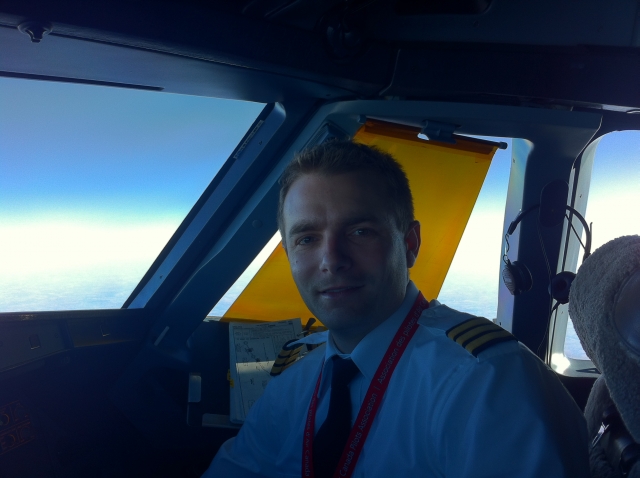
%20(2).jpg?size=medium)
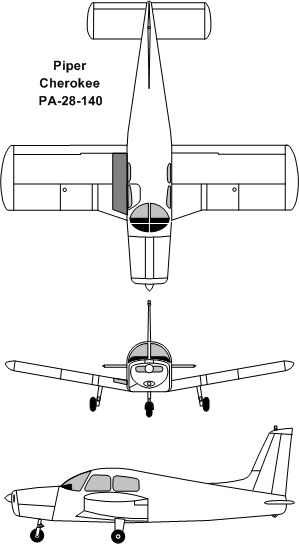
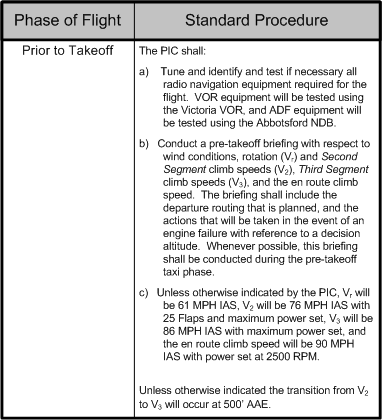
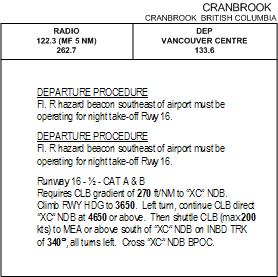
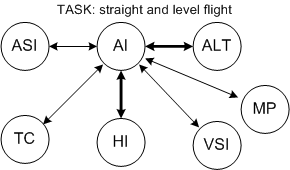
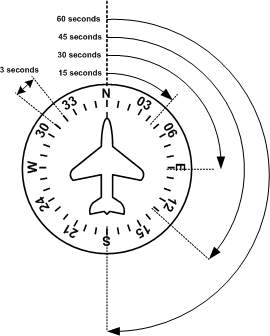
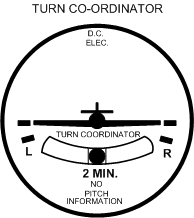
.gif)
